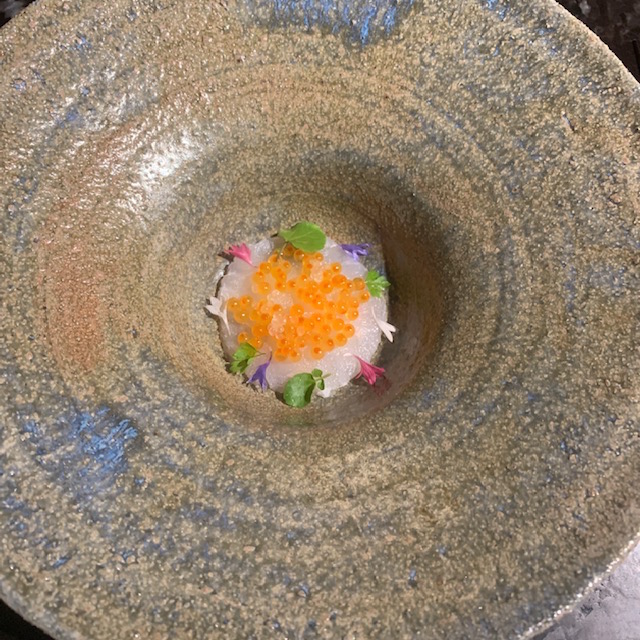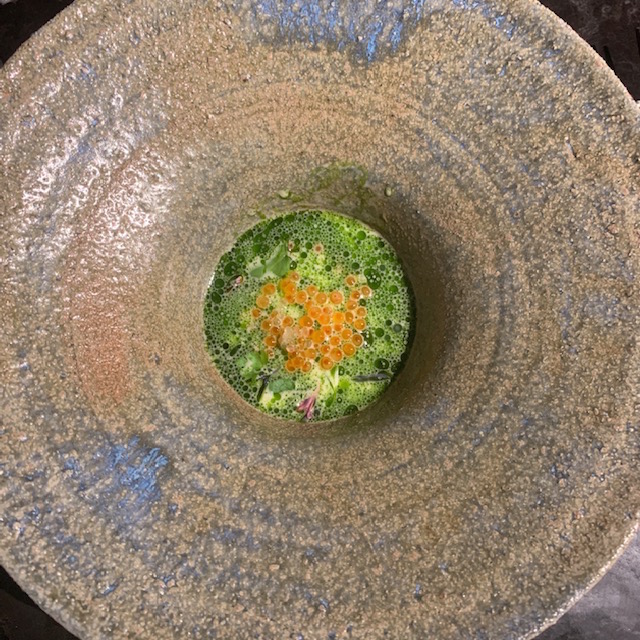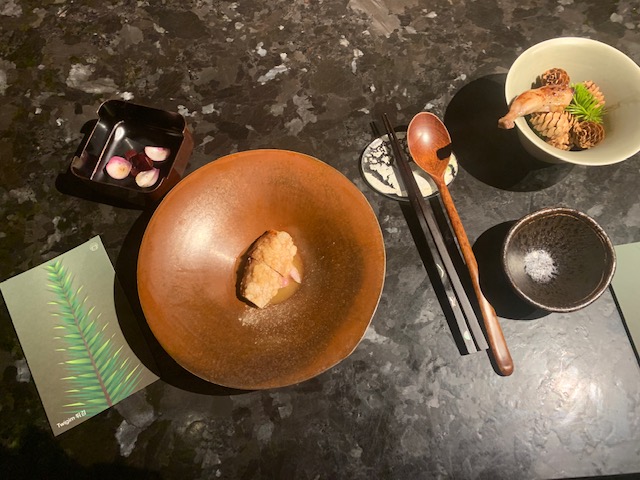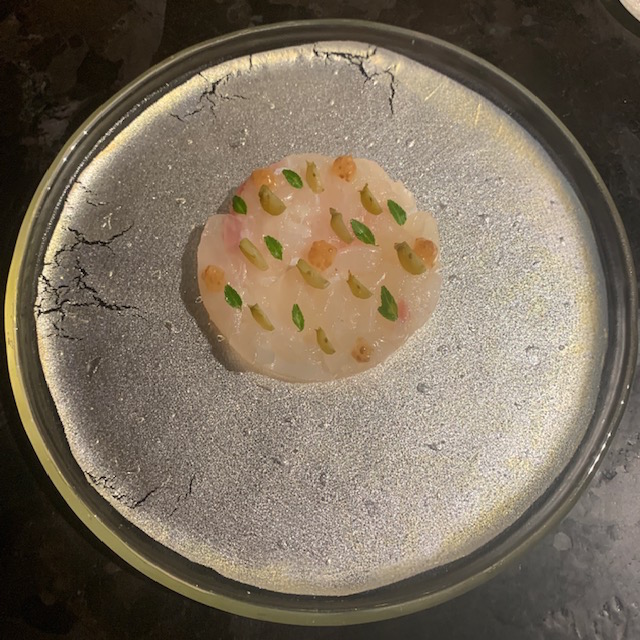Gastronomic ceramics in America: from otherworldly architecture to Korean ware
Much of the most exciting gastronomy in the US is in the hands of talented immigrants, second generation Americans or those who returned from temporary stages at uniquely inspiring kitchens mainly from France, Scandinavia or Japan. Yet, in America the most contemporary poised chefs spin their ideas through the wide accessibility to incredible produce and professional workforce to its own unique level. Plus there is one Savannah-raised grown-up child whose imagination surpasses any culturally-inspired culinary approaches.



I cannot see the “from a time that is yet to be” restaurant by Jordan Kahn (in his own words) anywhere else but in LA. His current futuristic, almost spiritual project is nothing like his previous venture, although not much less talked about Red Medicine. I dined at both, but here we talk gastronomic ceramics, not the food (which in my opinion was great). The entire concept of Vespertine is about the wholeness of the experience. The visual, aural, gustative and intellectual sensory impact feels post apocalyptic and so do the locally made gastronomic ceramics the chef chose.
The sci-fi design of the Vespertine in Culver City collectively transformed the creative television production area of Los Angeles. The extraterrestrial architecture by Eric Owen Moss Architects is not for everyone, but it strikes everyone. Some of the vessels were designed by the otherworldly creator. His architectural water pitcher (pictured above left) is literally a miniature of the building itself.


Most of the barred down, rustic and construction pieces resembling tableware is made on the same street by MATCH stoneware. As its name suggests, this studio (pottery classes available) works mainly with sturdy stuff. The rusticity of the weighty bowls and plates invisibly blends in with the architecture. The overwhelmingly black, grainy stone bowls and plates are simple, yet profoundly complement chef Kahn’s visually naturalist cuisine. Some serving utilities by MATCH stoneware are just slate slabs, while others like the bowl for the desert look like broken scraps to be thrown away. Yet, their edges are smooth and safe to handle. The unconventional attracts everything surrounding the Vespertine concept. This casual, rather understated style is what the location is about. Culver City is unquestionably the most 21st century part of Los Angeles.


Quite the opposite, culturally immersed and educative dining experience awaits you on Manhattan. At Atomix chef Junghyun and general manager Ellia Park intend to ‘gift,’ innovative Korean Cuisine to New Yorkers. Inviting young South Korean creatives to join them expands the experience beyond its realm into the far-eastern contemporary journey. Atomix commissioned up-and-coming artist Eunyoung Kown, porcelain master Namhee Kim, and even the chef’s cousin ceramicist Youme Oh. In an interview for Bon Appetit in 2019 J. Park says: “I want Atomix to be a way to introduce young Korean talent, there aren’t many channels to enter the market otherwise.”
From the names I dropped so far you get that the restaurant is also a family business. His cousin crafted this jade-hued ceramic bowl by hand to mimic traditional Korean wares.
In my Gastronomic ceramics series, check further out what talent the great French chefs support, how wild the Best Restaurant in the World goes in working with designers in Spain, and learn about the seasonal tableware selections in Japan.












